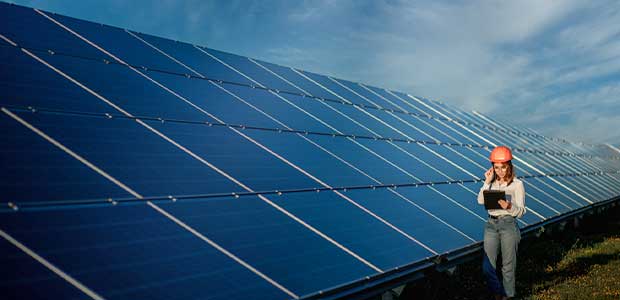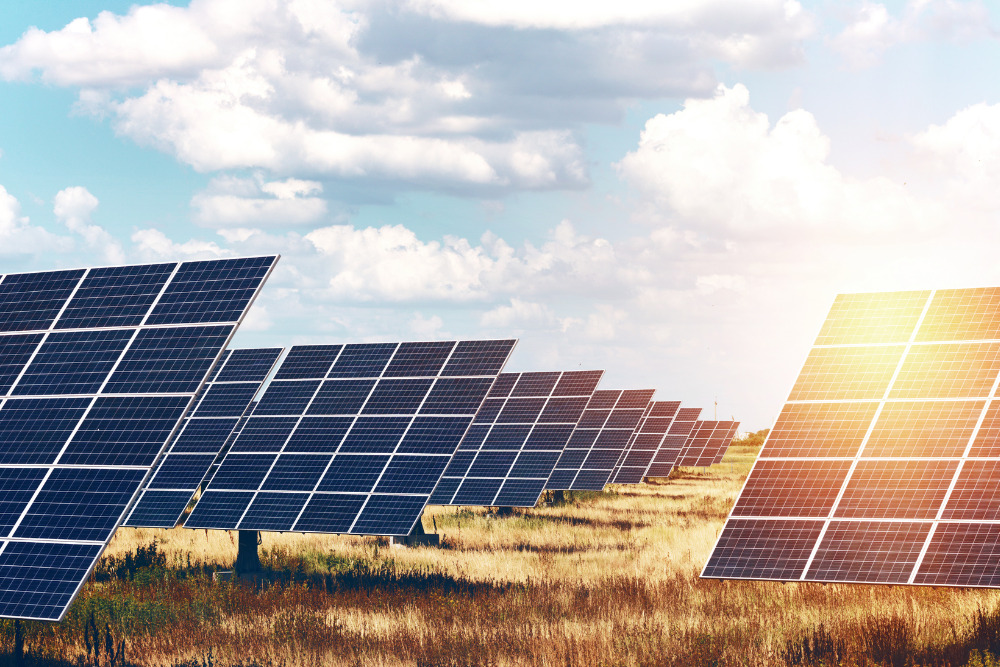Rely on Simply Solar Illinois for Professional Solar Panel Installations
Rely on Simply Solar Illinois for Professional Solar Panel Installations
Blog Article
Solar Power 101: A Beginner's Guide to Sustainable Power Solutions
As the globe increasingly moves towards sustainable energy services, recognizing the principles of solar energy becomes essential for both people and businesses. This overview gives an extensive overview of solar power, describing the numerous systems available and the devices behind their procedure. By exploring the benefits of solar technology, together with the monetary motivations and installation processes, one can obtain a more clear viewpoint on how to effectively incorporate this renewable source into their power technique. Nevertheless, the journey toward adopting solar energy welcomes additional assessment of the challenges and factors to consider that include it.
Understanding Solar Power
At its core, understanding solar power includes realizing the essential principles of exactly how sunlight can be converted into functional electrical power. Solar power is acquired from the sunlight's radiation, which can be harnessed through various innovations. The main mechanism for this conversion is the photovoltaic impact. This sensation happens when sunshine strikes semiconductor materials, commonly silicon-based, within solar batteries. The power from the sunshine thrills electrons in the semiconductor, enabling them to stream freely and generate direct current (DC) electrical power.

Understanding solar energy also involves recognizing its environmental advantages. By utilizing sunlight, we can reduce greenhouse gas discharges and lower air contamination, contributing to a more lasting future. The improvements in innovation and performance of solar systems proceed to boost their stability, making solar energy an increasingly attractive option for global power needs.
Kinds of Solar Power Solutions
Various sorts of solar power systems are frequently used to harness solar power for power generation. The key groups consist of photovoltaic or pv (PV) systems, focusing solar energy (CSP) systems, and solar thermal systems.
Photovoltaic systems utilize solar panels composed of silicon cells that convert sunshine directly right into electrical energy. These systems are functional and can be mounted on roofs, ground mounts, or incorporated right into structure materials.
Focusing Solar energy systems, on the various other hand, utilize mirrors or lenses to focus sunlight onto a small location, creating heat that drives a heavy steam generator to produce power - Simply Solar Illinois. CSP systems are generally deployed in large-scale power plants and need straight sunlight, find making them less appropriate for cloudy areas

Each type of solar energy system has its unique qualities, applications, and viability relying on geographic area, power demands, and budget, making it important to evaluate options based on details situations. - Simply Solar Illinois

Advantages of Solar Power
Using solar power via various systems not just gives a lasting means to create power however also offers a plethora of advantages. One of the most significant benefits is the decrease in greenhouse gas exhausts, adding to a cleaner environment and combating climate change. Solar power is renewable, indicating it is inexhaustible and available as long as the sunlight beams, unlike fossil gas, which are finite and depleting.
In addition, solar power can result in significant cost savings in time. House owners and businesses can minimize their electrical power costs dramatically, and oftentimes, they might earn credit scores for excess energy created via net metering. Furthermore, the solar sector produces tasks, from making to installation, promoting neighborhood economic climates.
Another engaging benefit is energy self-reliance. By producing their own electricity, individuals and communities can lower reliance on external energy sources, improving resilience versus changing power costs and supply disturbances. Solar energy systems require very little upkeep, making them a practical choice for lasting power generation.
Installation Refine Introduction
The installment procedure for solar power systems usually includes a number of key steps that make sure reliable assimilation into a building. Originally, a comprehensive site analysis is conducted to assess the roof covering's orientation, shielding, and structural stability, which are crucial to maximizing solar panel efficiency. Following this assessment, the design stage begins, where a customized solar power system is configured based on the property owner's energy needs and article source preferences.
When the design is settled, the required authorizations and authorizations are obtained from local authorities, weblink making sure compliance with regulations. The actual installation includes mounting the solar panels on the roof or ground, connecting them to an inverter, and incorporating the system with the residential property's electric setup. This phase may also entail mounting battery storage systems, depending upon the layout.
After installation, an extensive assessment is performed to validate the system's capability and security. The system is appointed, and home owners are informed on its operation and upkeep. With the installment full, the solar power system can start creating renewable resource, adding to sustainability and decreasing utility costs. This structured strategy guarantees that planetary systems are both effective and trusted, optimizing their lasting benefits.
Financial Incentives and Cost Savings
Checking out the economic incentives and savings associated with solar power systems can dramatically enhance the allure of making the button to renewable power. One of the most noteworthy motivations is the federal solar tax credit rating, which permits house owners to subtract a portion of their solar system installment prices from their government tax obligations.
Along with tax credit ratings, many states offer discounts that can further decrease ahead of time expenditures. Some utility companies likewise supply performance-based motivations, rewarding solar power manufacturing gradually. Financing alternatives, such as solar financings and leases, enable consumers to set up systems with little to no down repayment, making solar power a lot more accessible.

In addition, solar systems can raise building values, giving a strong return on financial investment. Overall, the mix of incentives and financial savings makes solar power a financially attractive choice for numerous households.
Final Thought
In final thought, solar power stands for a crucial component of sustainable power solutions, giving a pathway toward reduced carbon footprints and boosted ecological defense. Inevitably, the change to solar energy not just cultivates eco-friendly obligation however also advertises economic financial savings and energy freedom.
Report this page